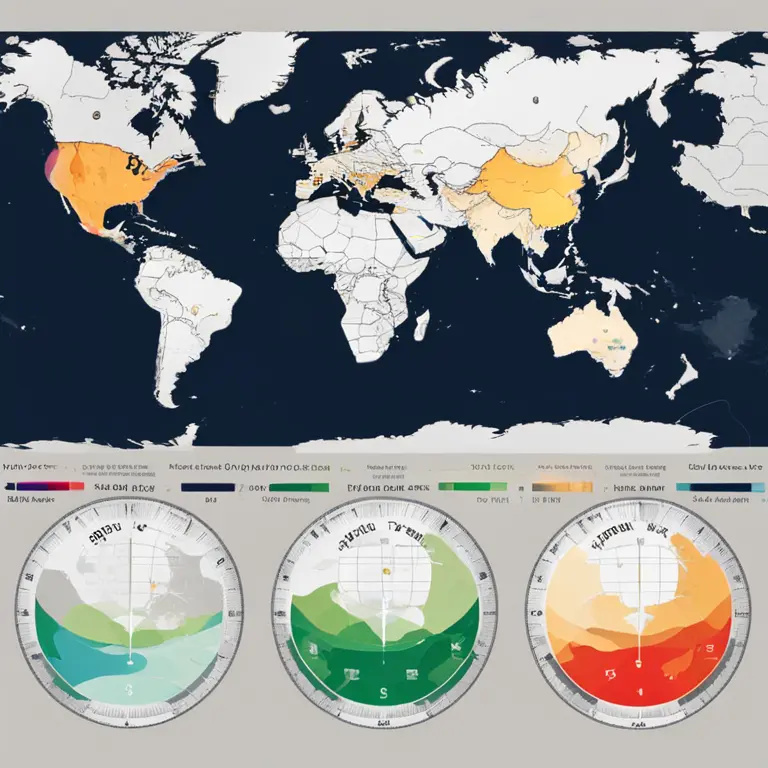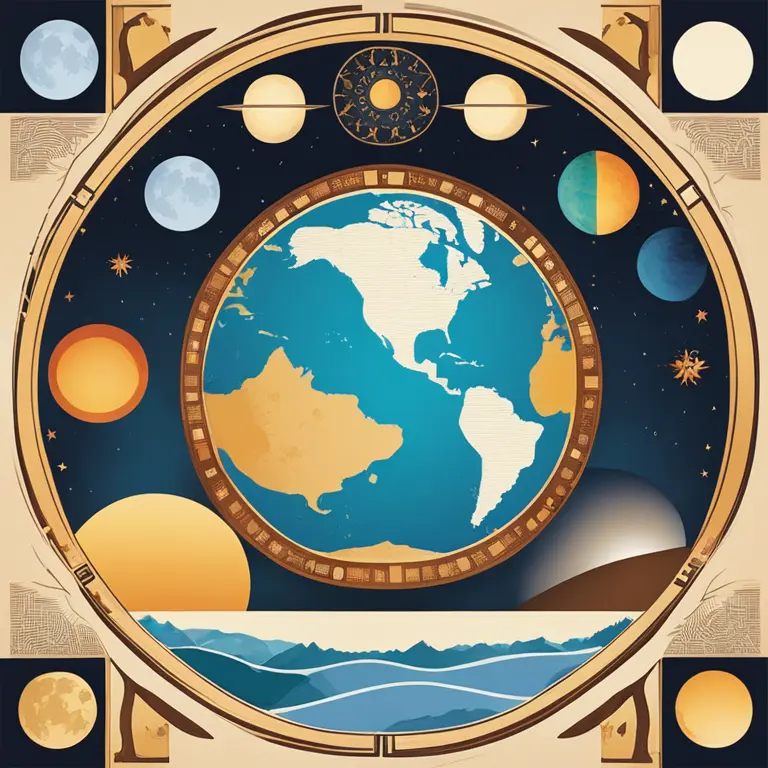
Are Moon Phases Universal? Unlocking The Truth
Delve into whether moon phases are perceived the same across the globe and how this affects astrological practices.
article by Priya Deshmukh
Moon Phases: A Global Perspective
The Moon dances through its phases, from New Moon to Full Moon, in a cycle that influences tides, nocturnal visibility, and even human behavior. But is this lunar ballet the same in every corner of the world? As we embark on this celestial exploration in 2024, it is essential to recognize that while the Moon itself is a constant in our sky, the timing and appearance of its phases are indeed dependent on one's geographical location. Due to the interplay of the Moon’s orbit, Earth's rotation, and the positioning of the observer, subtleties arise in how we experience each phase from the New Moon's invisibility to the Full Moon's luminous spectacle.

The Science Behind Moon Phases
Every phase of the Moon unfolds as a result of its position relative to Earth and the Sun. The nuances of lunar visibility are not mere matters of subjective perception but are grounded in the physics of celestial mechanics. As 2024 progresses, the angular relationship between these three celestial bodies will continue to dictate the illuminated portion of the Moon visible from Earth. Although the sequence of phases – New Moon, Waxing Crescent, First Quarter, Waxing Gibbous, Full Moon, Waning Gibbous, Last Quarter, and Waning Crescent – is a constant, the exact moment a specific phase occurs can vary by a few minutes or hours from one location to another.

The Role of Time Zones in Moon Viewing
Time zones play a crucial role in the perception of moon phases. To understand this, consider that the Moon completes a cycle around Earth approximately every 29.5 days. However, as one moves eastward or westward across time zones, the local time adjusts by an hour for each zone crossed. This means that the exact minute a particular phase is officially reached may differ by time zone. For example, a Full Moon that occurs at 9 PM in New York will technically not occur until 6 PM in Los Angeles on the same date, due to the three-hour time difference.

Latitude's Impact on Lunar Appearance
While time zones affect the timing of moon phase observation, latitude – or how far one is from the equator – can alter the Moon's appearance. In 2024, observers at different latitudes will still behold the same phase on the same day, yet the angle at which the Moon's features present themselves can vary significantly. At high latitudes, the Moon may seem tipped on its side, while observers at the equator will often see the Moon more 'upright.' These positional differences do not change the phase but may influence how features like lunar 'seas' and craters are perceived.

Seasonal Variations and Their Effects
Seasons also impose variations on the visibility of moon phases. Due to the tilt of Earth's axis, the height of the Moon in the sky will change throughout the year, which in turn can modify the intensity and duration of moonlight that we receive. Observers in the Northern Hemisphere during their winter months will find the Full Moon riding high in the sky, creating long moonlit nights, while the inverse occurs during summer. Conversely, in Southern Hemisphere, seasons produce the opposite effect on lunar visibility. The changes in seasons don't alter the timing of moon phases, but they can impact the practical experience and spiritual interpretations of lunar energy.
Astrology and Moon Phases in 2024
Looking through the astrological lens, the significance of moon phases remains universally acknowledged among practitioners. In the coming years, including 2024 and beyond, astrologers will continue to interpret the Moon's phases within the context of local geographical considerations for enhanced relevance. For instance, the potent energy of a New Moon in Aries may be experienced globally, but the exact intentions set and activities planned could be fine-tuned by considering the moon phase timing and positioning tailored to the individual's locale. This practice ensures that astrological guidance remains attuned to the rhythms of the universe as experienced intimately by each person.
Published: 1/19/2024
Modified: 1/19/2024
More predictions
Come back here soon to learn more about yourself and your future


The King of Swords in Tarot: Wisdom and Authority
Discover the profound symbolism and interpretation of the King of Swords in tarot, a figure of clear thinking and leadership.


The Tarot Fool: A Journey of Potential & Beginnings
Delve into the symbolism of The Fool in tarot, revealing insights into new beginnings, potential, and the adventurous spirit of this enigmatic card.


The Ace of Wands Tarot Guide: Spark of Inspiration
Ignite your understanding of the Ace of Wands as it heralds potential, creativity, and breakthroughs in tarot readings for future guidance.